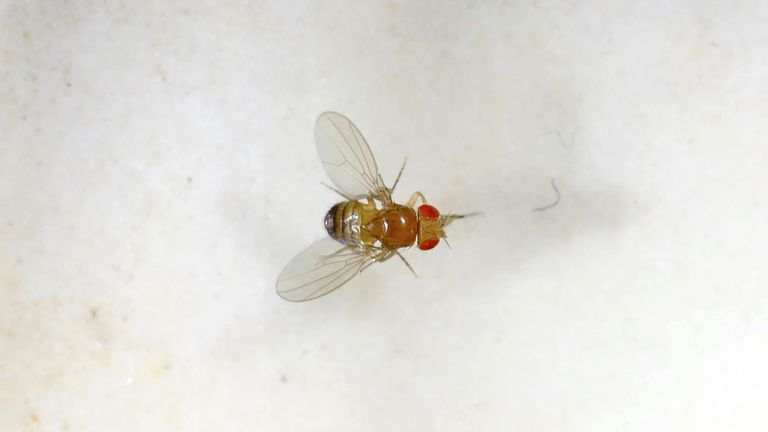First map of insect brain signals 'big step forward' in understanding thoughts
Researchers have built the first ever map of an insect's brain, showing every neuron and how they are wired together - now experts say this could bring them closer to understanding the mechanism of thought and behaviour.
Thursday 9 March 2023 19:00, UK
A map of the 3,016 neurons that make up a baby fruit fly's brain is the first of its kind, according to a new study.
Researchers say the map of the insect's brain is the largest ever completed and shows every neuron - or messenger cell - in the organ and how they are wired together.
Experts say it could bring them closer to understanding the mechanism of thought and behaviour and has been described as a "big step forward".
The project was led by Professor Marta Zlatic and Professor Albert Cardona, of the Medical Research Council Laboratory of Molecular Biology, which is based at the University of Cambridge.
"The way the brain circuit is structured influences the computations the brain can do," said Professor Zlatic. "But, up until this point, we've not seen the structure of any brain except of the roundworm C. elegans, the tadpole of a low chordate, and the larva of a marine annelid, all of which have several hundred neurons.
"This means neuroscience has been mostly operating without circuit maps.
"Without knowing the structure of a brain, we're guessing on the way computations are implemented.
"But now, we can start gaining a mechanistic understanding of how the brain works."
The work took researchers 12 years to complete, with the imaging alone taking about a day per neuron.
The research, which has been published in the Science journal, was a joint project with experts at the University of Cambridge and Johns Hopkins University in the US, combining to complete the largest ever described brain connectome - a detailed map of neural connections in the brain.
In order to build an image of the fruit fly's neural connections, the researchers had to scan thousands of slices of the larva's brain before painstakingly reconstructing them to complete the map.
Be the first to get Breaking News
Install the Sky News app for free


Then they could begin to meticulously annotate the connections between neurons on to the reconstructed image.
"This is a big step forward in addressing key questions about how the brain works," said Jo Latimer, head of neurosciences and mental health at the Medical Research Council.
Read more:
Mice born with two fathers after scientific breakthrough
NHS weight loss jab already having supply issues as private clinics stockpile
Robotic arm assists with knee replacement
Current technology is not advanced enough to map the connectome for more complex animals such as large mammals, but this breakthrough could start to change that.
As well as mapping the 3,016 neurons, researchers mapped an incredible 548,000 synapses - the points of contact between neurons where information is passed between them.

